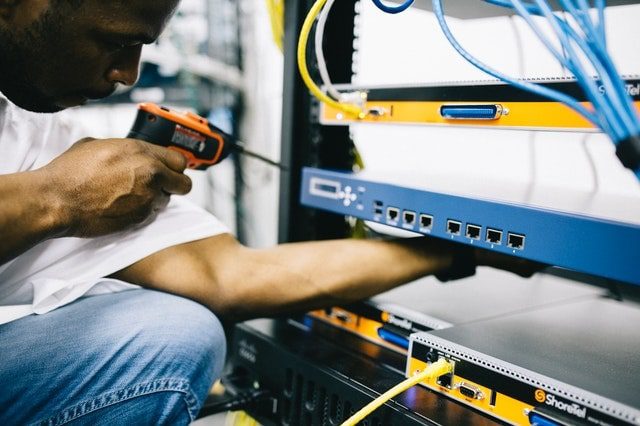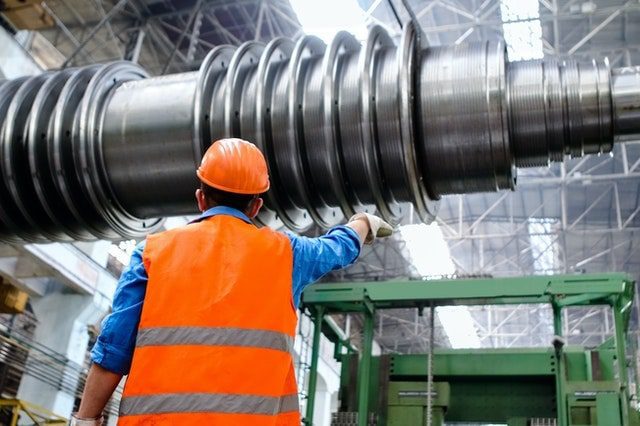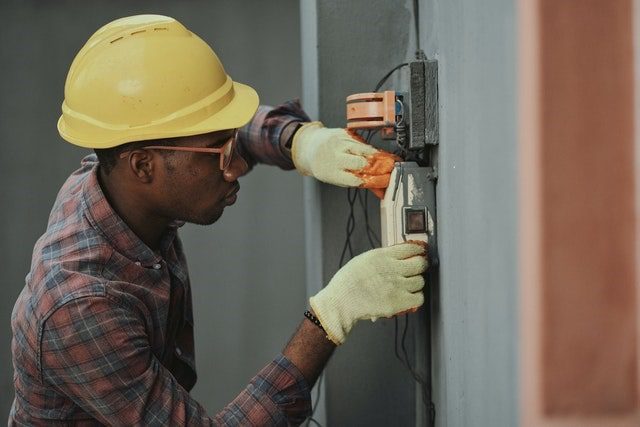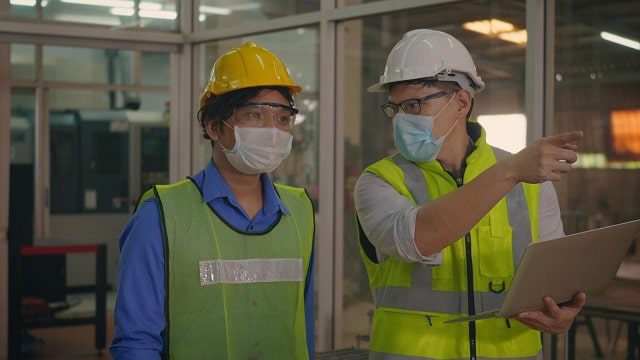Many facilities managers have sought out new maintenance management practices in recent years in an effort to lower operations costs. Industry estimates show that maintenance costs can account for 15-40% of the total production costs. This makes sense given that equipment is often operated continuously or for extremely long intervals to maximize productivity.
Companies that are unable to maximize equipment life may find it challenging to run a profitable operation.
In this guide, we’ll explore the topic of maintenance management in detail. As an increasingly important function, maintenance is a far-reaching business priority with a significant number of considerations.
We’ll cover what maintenance management is, why it’s important, and how a company can develop roles responsibilities, and practices to optimize asset performance.
What Is Maintenance Management?

Maintenance management is a discipline that adds structure to all activities involved with planning, scheduling, completing, and tracking maintenance work. The scope of maintenance management goes far beyond simply working with equipment and requires creating a comprehensive set of processes and controls. To properly track maintenance work orders and related activities, it is necessary to implement a combination of hardware and maintenance software tools.
The use of asset barcodes combined with scanners can drastically improve the efficiency of a warehouse, facility, or office environment. To streamline their overall approach, many companies invest in a computerized maintenance management system (CMMS) to centralize their entire operation. A similar type of software, known as Enterprise Asset Management (EAM) platforms, often have some similar features that can be used for tracking maintenance management activities.
Why Is Maintenance Management Important?

When properly implemented, a maintenance management program can provide several benefits to an operation. Given that many business locations include hundreds or even thousands of assets, it is crucial that any maintenance management system remain organized and up to date. The following are just a few of the many ways in which maintenance management provides value.
- Optimal Efficiency. Demonstrating control over equipment upkeep makes it easier to take a proactive approach to your maintenance work rather than focusing only on repairs and emergencies. Maintenance management provides a team complete visibility over an entire operation from a centralized software platform. This not only saves time but makes it far easier to identify issues quickly and make the necessary improvements.
- Reduced Downtime. Like asset management, maintenance management should also consider the entire product lifecycle of an asset. Understanding how the age of an asset or component may impact performance makes it easier to make informed decisions about system upgrades. Also, using a mix of different maintenance techniques can also improve equipment uptime by identifying an optimal setup for each tool.
- Controlled Costs. Unexpected repairs can cost significant time and result in production delays and other disruptions. Managing maintenance activities in an organized fashion makes it easier to control costs, including overtime, spare parts, and labor. Improved planning can also be used to optimize inventory stocking levels and maximize storage space.
- Improved Safety. In addition to guidelines for acceptable work practices set by the U.S. Occupational Safety and Health Administration, most businesses must also be mindful of several other state and federal regulations. Maintenance management helps by centralizing warranty and service information that may be required during audits and other regulatory reviews. Properly maintained equipment also helps ensure operator safety.
- Better Decision Making. Failing to make proper decisions regarding the maintenance and upkeep of equipment can lead to failures and safety incidents. Sizeable industrial equipment and complex systems can present a particular challenge when it comes to asset lifecycle planning. One of the great benefits that maintenance management systems provide is a comprehensive set of reporting tools. Access to quality data can significantly improve the decision-making process for asset and maintenance management.
The Role of Maintenance Management

With maintenance management, when many people think about the word “maintenance,” they picture working with equipment and performing service activities. This type of work is undoubtedly a central function of maintenance management, but several other activities must be integrated to create a truly effective system.
As mentioned previously, a computerized maintenance management system and EAM software platforms are an excellent way to connect several different workflows into a single solution. When defining the role of maintenance management in an organization, the following key areas should be included.
- Asset Management. One central area of overlap between CMMS and EAM platforms is asset management functionality. Before work can be appropriately scheduled, it is necessary to have an accurate database of properly tagged and tracked assets. For some companies, simply doing a complete assessment of their assets can lead to several cost improvements by identifying old or underutilized equipment for removal.
- Inventory Management. Inventory can be managed for raw materials, finished products, packages, equipment, and parts. Most companies that work with products must maintain an organized warehouse and achieve accurate inventory cycle counts. Many do this using an inventory management system. These tools are beneficial for maintenance management to control spare parts inventories and other assets that are needed to perform maintenance work.
- Maintenance Work Order Management. One of the central functions of maintenance management software is to organize the processing of work orders. This is especially important for companies with a large field service team that works with equipment in remote locations. Having a centralized system for scheduling, assigning, and completing maintenance work tasks keeps the entire team aligned and reduces errors and downtime.
- Facility Management. Buildings of all types require a large amount of upkeep to ensure that the environment is suitable for employees and visitors. Equipment such as HVAC units, chillers, and data centers must be frequently serviced and checked to ensure a proper operating condition. Maintenance management is an essential resource for facilities managers to verify that scheduled service and maintenance plans align well with expected usage.
- Metrics and Reporting. Savvy managers understand the importance of reviewing quality data to improve the decision-making process. This is no exception when it comes to asset and maintenance management. Reviewing maintenance data can help achieve a more balanced budget and increases transparency between departments. Better equipment data also make cost projections more accurate and gives a company the ability to review many aspects of an operation at the same time. Costs associated with factory overhead, facilities costs, and maintenance resources are just a few of the many data points that may be considered.
As you can see, maintenance management requires that several essential functions work together to form a cohesive system. While the specific roles may be assigned to different departments based on the structure and the objectives of each organization, the work processes are usually very similar. For a maintenance management program to be effective, there must be alignment and transparency between all the resources involved.
Types of Maintenance Management

Maintenance activities take on many forms, and companies across all industries continue to innovate and find new ways to improve equipment performance. Multiple maintenance types may be used simultaneously to provide the optimal amount of service for a particular tool in many cases. It is also worth noting that not all equipment is suitable for each type of maintenance. Several factors should be considered, and we will review them in this section.
- Reactive Maintenance. As the name suggests, reactive maintenance refers to maintenance performed when there is a noticeable indicator that service is required. This can be determined from a visual inspection or other direct indicators. Reactive maintenance activities are generally managed with a periodic inspection or auditing plan. This form of maintenance can be especially useful when servicing parts with a lifetime that is hard to predict based on usage or other known factors. Reactive maintenance also refers to any emergency work or repairs required in the event of an unplanned outage.
- Proactive Maintenance. A proactive approach to maintenance requires some preplanning to identify potential failure points. This can be done using several factors, such as time or operating hours, that indicate that service should be performed. While proactive maintenance may sound like a desirable approach, it is also easy to overcompensate and perform extra work that is not truly required to maintain optimal operating conditions. Therefore, it is still imperative to inspect systems thoroughly and use multiple data points to improve a service plan over time. Both preventive and predictive maintenance are forms of proactive maintenance.
- Preventive (Time-Based) Maintenance. Preventive maintenance involves the use of time-based triggers for scheduling and performing service work. The exact schedule for each piece of equipment is often determined based on several factors, such as the expected amount of use and potential system wear. Monitoring the expected lifetime of consumable parts is also very important with preventive maintenance. It is desirable to replace parts before they fail but not so quickly as to lose additional operating time.
- Predictive (Condition-Based) Maintenance. One of the newer types of maintenance is called predictive maintenance, also known as condition-based maintenance. As a challenging method of controlling equipment operations, predictive maintenance requires the use of sensors and other in-line monitoring devices to collect real-time data. This data can then be used to set operating parameters that dictate when service activities should take place. Given the potential investment in software and hardware components required, predictive maintenance is best suited for expensive equipment and systems that are particularly prone to highly disruptive failures.
One of the significant benefits of maintenance management and the use of a CMMS is the ability to track all activities and maintain a detailed service history for each asset. This not only makes it easier to select the appropriate types of maintenance but also provides a platform for review and improvement. No system or approach is perfect, and an iterative approach involving continuous improvement is always a good idea when it comes to maintenance.
Qualities of a Good Maintenance Manager

A maintenance manager fulfills a vital role between a maintenance director or another top-level executive and the supervisors and technicians who perform the bulk of the service work. This job requires a unique mix of technical skills and business acumen to see the big picture while also addressing day-to-day issues and needs. To gain a better understanding of this essential position, let’s take a look at the job requirements and desired skills of a good maintenance manager.
Given the complexities of maintenance work activities that take place at many companies, the job responsibilities of a maintenance manager can cover a broad scope. Some of the significant areas of focus include:
- Managing all maintenance-related work
- Coordinating work in a way that meets regulatory guidelines
- Maintaining an appropriate spare parts inventory
- Managing service technicians and other staff
- Implementing a comprehensive maintenance program
- Reporting on the effectiveness of maintenance activities
- Identifying ways to improve asset productivity
- Ensure adequate training for staff
A maintenance manager can wear many hats, and there are some definite similarities with the responsibilities of a facilities manager or asset manager. As a leadership position, many technical and soft skills are also desired in a maintenance manager. Some of the most common are:
- A demonstrated ability to lead others
- Placing a high priority on time management
- The ability to pivot and adapt
- Strong interpersonal communication skills
- Excellent problem-solving skills
- A strong commitment to teamwork
- Fundamental knowledge of relevant equipment
A maintenance manager must rationalize a company’s performance goals with the realities of equipment capabilities. In highly specialized industries that serve a large number of customers, such as aerospace and healthcare, the stakes are even higher. This is the main reason why a good balance between soft skills and technical knowledge is required to be an effective maintenance manager. As described above, it is only with a close collaboration between many departments that companies can create a robust maintenance management program. Maintenance work should never take place in a vacuum, and it’s vital for managers to solicit feedback from technicians, operators, and other staff that interact with equipment.
Maintenance management has become a priority for many businesses as an efficient way to integrate several separate functions into a single asset and maintenance management framework. Computerized Maintenance Management Systems have created flexible platforms that can be integrated with scanners and asset tags for facilities management to create automated maintenance work order processes. The future of maintenance management will be driven by advancements in technology combined with the ability to innovate and develop new and improved work processes






